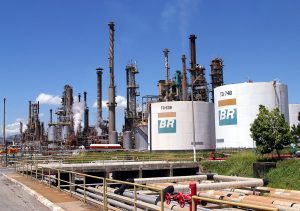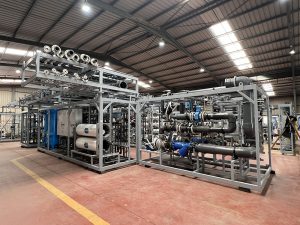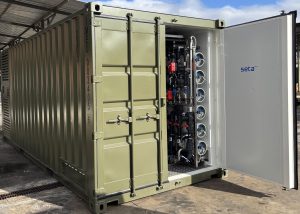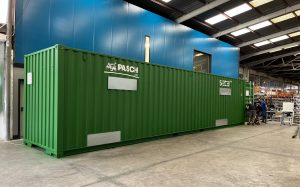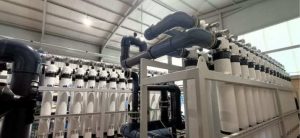Introduction
Water management faces a silent but growing challenge: emerging pollutants. These compounds, also known as emerging concern pollutants (ECPs), are not new to the environment, but their detection and study are. Thanks to advances in detection and analytical techniques, we now know that our waters contain traces of pharmaceuticals, microplastics, cosmetics, pesticides, hormones, and even antimicrobial resistance genes.
Although present in very low concentrations, these pollutants can have significant effects on aquatic ecosystems and human health. And the most worrying part: conventional wastewater treatment plants (WWTPs) are not designed to remove them.
Faced with this scenario, membrane separation technologies such as ultrafiltration and reverse osmosis are becoming essential to tackle this challenge.
In this article, we explore what emerging pollutants are, why they pose a growing problem, and how these technologies can help remove them effectively.
What are Emerging Pollutants?
Emerging pollutants are chemical or biological substances that are not yet officially regulated but are increasingly detected in surface, groundwater, and wastewater. Their origins are diverse:
- Pharmaceuticals: antibiotics, painkillers, antidepressants.
- Personal care products: creams, shampoos, sunscreens.
- Microplastics: plastic fragments smaller than 5 mm.
- Hormones: natural or synthetic, such as those found in contraceptives.
- Pesticides and herbicides: used in agriculture.
- Antimicrobial resistance genes: generated by excessive antibiotic use.
These compounds enter water through multiple routes: domestic, industrial, hospital, agricultural, and urban runoff. Although their concentrations are usually very low (nanograms or micrograms per liter), their persistence and bioaccumulation potential make them a silent threat.
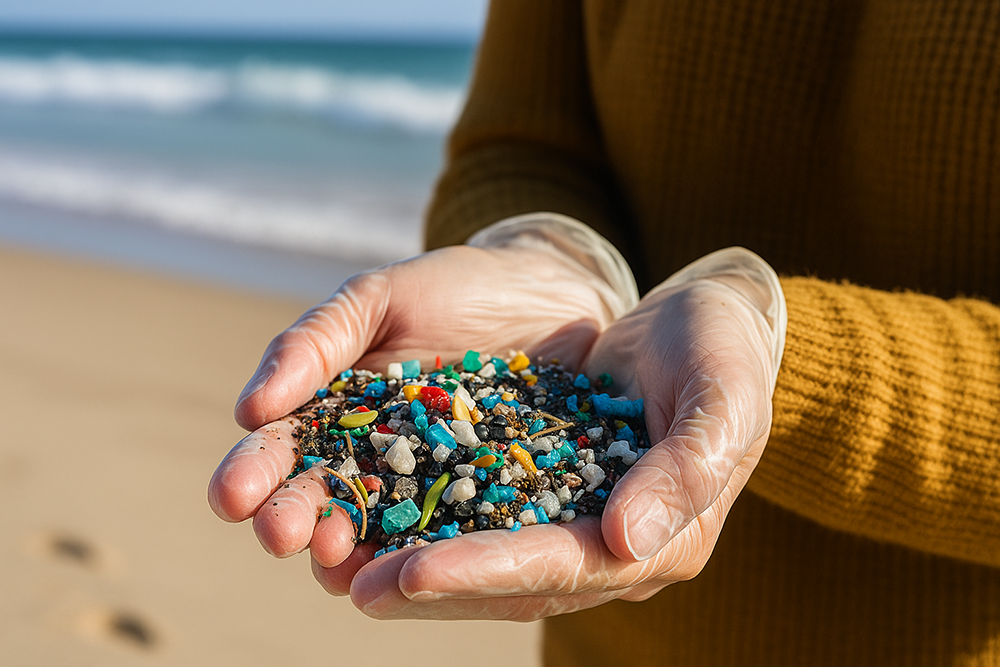
Why are they a Problem?
Emerging pollutants can have harmful effects on the environment and human health. Key risks include:
- Endocrine disruption: some substances interfere with the hormonal system of animals and humans, altering biological functions.
- Chronic toxicity: even at low doses, they can cause long-term harmful effects.
- Antimicrobial resistance: resistance genes can spread, making infection treatment harder and reducing antibiotic effectiveness.
- Biodiversity impact: they alter behavior, reproduction, and survival of aquatic species; a clear example is microplastic accumulation in marine ecosystems.
The main problem is that many of these compounds are not fully removed by conventional wastewater treatments, allowing them to enter rivers, groundwater, and eventually drinking water.
Limitations of Conventional Treatments
Conventional WWTPs are primarily designed to remove organic matter, nutrients (nitrogen and phosphorus), suspended solids, and pathogenic microorganisms. However, they are not prepared to remove emerging pollutants, which require more sophisticated processes.
Typically, these conventional treatments include:
- Pretreatment: removal of large solids.
- Primary treatment: sedimentation of solids.
- Secondary treatment: biological processes to degrade organic matter.
- Tertiary treatment: disinfection and nutrient removal.
While effective for conventional pollutants, these processes do not fully remove ECPs, which can pass through physical and biological barriers and reach the environment. Therefore, implementing a quaternary treatment capable of removing emerging pollutants is increasingly necessary.

TARU Directive: A New European Framework
The Urban Wastewater Treatment (TARU) Directive is a European regulation aimed at modernizing water management in cities. Key points include:
- Integration of technologies capable of removing microcontaminants is required, meaning advanced treatments are necessary.
- WWTPs must become more efficient and sustainable.
- Manufacturers generating emerging pollutants must help fund their removal, implying an extended producer responsibility.
The TARU directive represents a paradigm shift in European water management, setting stricter requirements for urban wastewater treatment, including quaternary treatments, energy neutrality, and extended producer responsibility.
Advanced Technologies to Remove Emerging Pollutants
Given growing concerns over emerging pollutants and the limitations of conventional treatments, integrating more effective specific solutions is essential.
Technological evolution has developed processes capable of removing previously undetectable compounds. Among these, membrane separation technologies such as ultrafiltration (UF) and reverse osmosis (RO) have proven highly effective at removing microcontaminants.
These technologies not only help meet new regulatory requirements, such as the TARU directive, but also pave the way for safer, more sustainable, and resilient water management.
Ultrafiltration (UF)
Ultrafiltration (UF) is a physical process using membranes with pores of 0.01 to 0.1 microns. It can retain suspended particles, bacteria, viruses, and some organic compounds, making it an effective tool to improve water quality.
Its main advantages include high efficiency in removing solids and microorganisms and low energy consumption, making it particularly suitable as a pretreatment step in more complex systems.
However, UF alone cannot remove all emerging pollutants and is often combined with more specific technologies.
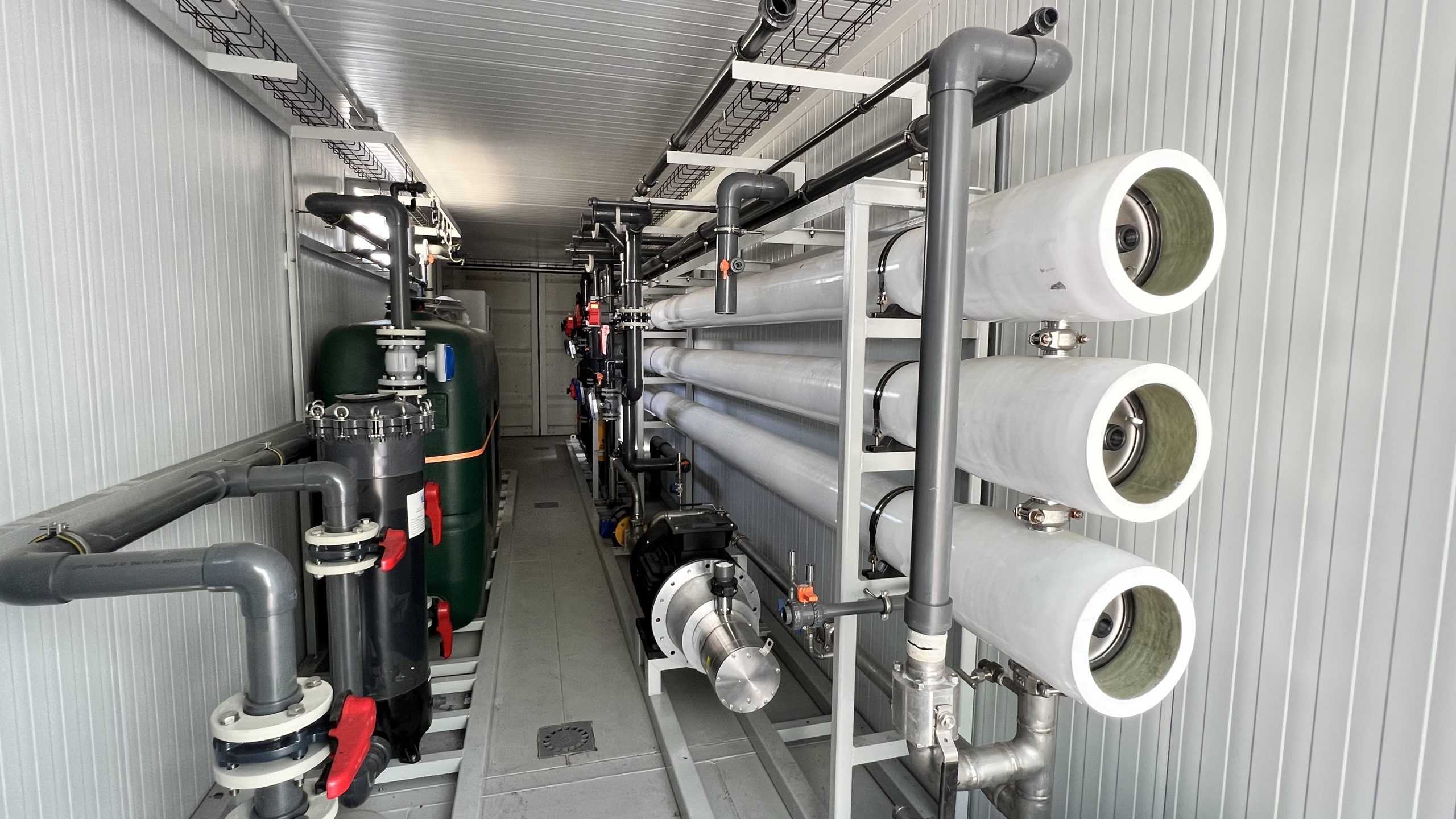
Reverse Osmosis (RO)
Reverse osmosis (RO) is one of the most effective water purification technologies. It uses semi-permeable membranes capable of retaining virtually all types of pollutants, including salts, heavy metals, pesticides, pharmaceuticals and other emerging concern pollutants (ECPs). With the ability to remove up to 99% of these substances, RO produces very high-quality water suitable for demanding industrial and human consumption uses.
RO has become the dominant water treatment technology due to continuous advances that overcome initial limitations such as high energy consumption and concentrate management. Today, it is an effective, reliable, and widely adopted solution worldwide.
Integration of energy recovery systems, development of more efficient and durable membranes, and process optimization have significantly reduced energy and economic impacts. Efficient concentrate management allows reuse or complementary treatment, making RO a sustainable, accessible, and robust option for tackling emerging pollutants.
UF + RO Combination
One of the most effective strategies for removing emerging pollutants is combining ultrafiltration (UF) and reverse osmosis (RO) in an integrated system. UF acts as a pretreatment step, retaining suspended solids, microorganisms and large particles. This improves water quality before RO and protects RO membranes, reducing fouling and extending their lifespan.
After UF, water passes through RO, removing the most difficult pollutants such as dissolved salts, heavy metals, pesticides, pharmaceuticals and other emerging concern pollutants.
This synergy achieves very high purification levels, optimizing system performance and reducing operational costs related to membrane maintenance.
It also offers flexibility in plant design, allowing adaptation to different wastewater types and contamination levels. Under the new TARU directive and current environmental challenges, UF + RO integration is a robust, effective, and sustainable solution.

Other Complementary Treatments
In addition to UF and RO, other technologies can complement ECP removal, such as:
- Advanced oxidation processes (AOP): use ozone, hydrogen peroxide, or UV light to break down resistant pollutants.
- Activated carbon adsorption: retains organic compounds on its surface.
- Membrane bioreactors: combine biological and physical processes for greater efficiency.
Each technology has advantages and limitations, and selection depends on pollutant type, water volume, and treatment objectives.
Success Cases and Real Applications
UF + RO combination has proven highly effective for removing emerging pollutants in advanced water treatment. It addresses pharmaceuticals, endocrine disruptors, microplastics, and other pollutants not removed by conventional methods.
Applications include:
- Hospitals and healthcare centers: treat wastewater with high loads of drugs, antibiotics, and biological agents, reducing environmental contamination and microbial resistance spread.
- Municipalities with water scarcity or high contamination pressure: UF + RO produces safe drinking water from highly polluted sources.
- Cosmetic and pharmaceutical industry: treat effluents containing pharmaceuticals and other compounds, avoiding environmental discharge and meeting strict regulations.
- Water reuse projects: in urban areas, UF + RO ensures regenerated water quality suitable for municipal, industrial, and agricultural use.
These cases show that combining UF and RO provides a robust, scalable, and sustainable solution to the challenges posed by emerging pollutants in the water cycle.
Conclusion
Emerging pollutants are among the greatest current challenges in water management. Their invisible presence can have serious consequences for human health and the environment.
The new TARU directive marks a turning point, requiring a rethink of wastewater treatment. Investing in advanced technologies is not optional but necessary.
Conventional technologies cannot remove them completely, but ultrafiltration and reverse osmosis provide effective, proven solutions. Combining these techniques achieves purification levels meeting current and future requirements.
At SETA, we have been developing and implementing these solutions for years, positioning ourselves as leaders in designing and manufacturing compact water treatment plants that guarantee maximum efficiency and reliability for our clients.



